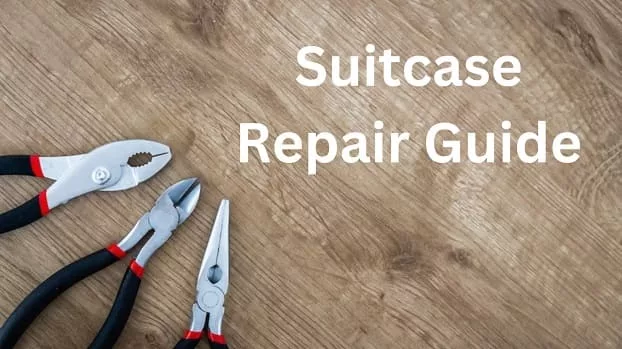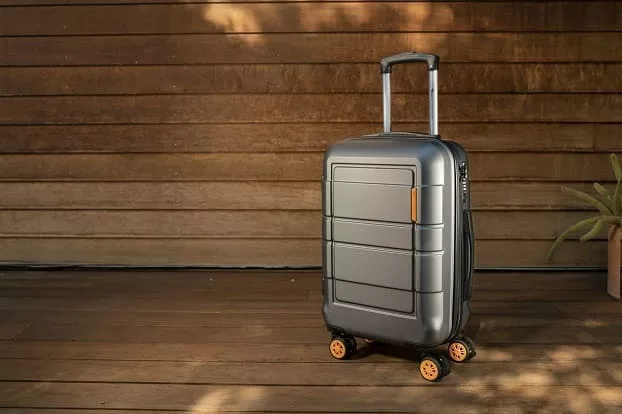
If you’re here, you want to know how to repair a damaged luggage suitcase. Your trusty luggage suitcase has been with you through thick and thin – from sunny beaches to snowy mountaintops.
However, after countless travels, it’s no surprise that it may have suffered a few bumps and bruises along the way.
Don’t fret, for there’s hope yet! In this guide, we’ll cover how to repair a damaged luggage suitcase, so you can keep adventuring with your trusty companion.
Whether it’s a broken handle or a cracked wheel, we’ve got you covered with easy and effective solutions to get your luggage looking and working like new again.
So, let’s get cracking!
Assessing the Damage

The first step in repairing a damaged luggage suitcase is to assess the damage. A suitcase can sustain various types of damage, including scratches, scuffs, tears, broken zippers, damaged handles, and more.
It’s essential to determine the extent of the damage before deciding whether to repair or replace the suitcase. If the damage is minor, you can often repair it yourself. However, replacing the suitcase may be more cost-effective if the damage is significant.
Tools and Materials Needed
You’ll need some tools and materials to repair a damaged luggage suitcase. The tools you’ll need will depend on the damage you’re repairing, but some essential tools include a sewing kit, a hammer, pliers, a screwdriver, and glue.
The materials you’ll need will also depend on the type of damage, but common materials include fabric patches, adhesive tape, and replacement zippers.
Steps to Repair a Damaged Luggage Suitcase
The following is a step-by-step guide to repairing a damaged luggage suitcase:
- Clean the suitcase: Before you start repairing the damage, cleaning the suitcase thoroughly is essential. Use a damp cloth to wipe down the exterior and interior of the suitcase, removing any dirt or debris.
- Assess the damage: As mentioned earlier, determine the extent of the damage to the suitcase. If the damage is minor, you can often repair it yourself.
- Repair the damage: Depending on the type of damage, there are various repair methods. For example, if scratches or scuffs on the suitcase’s surface, you can buff them out using a soft cloth and some toothpaste. If the zipper is broken, you may need to replace it. You can do this by using a seam ripper to remove the old zipper and then sewing a new one.
- Test the repair: Once you’ve repaired the damage, test the repair to make sure it’s secure. For example, if you’ve replaced the zipper, test it by opening and closing it several times.
Common Repairs for Luggage Suitcases
Here are some common repairs for luggage suitcases:
- Repairing scratches and scuffs: You can often remove scratches and scuffs from a suitcase’s surface by buffing them with toothpaste.
- Fixing broken zippers: If the zipper is broken, you may need to replace it.
- Patching holes and tears in the suitcase fabric: You can patch holes and tears in the suitcase’s fabric using adhesive tape or fabric patches.
- Repairing or replacing damaged handles: If the suitcase’s handle is damaged, you may need to replace it.
Advanced Repairs for Luggage Suitcases
Here are some advanced repairs for luggage suitcases:
- Repairing or replacing wheels: If the wheels are damaged, you may need to replace them.
- Fixing a damaged frame: If the suitcase’s frame is damaged, you may need to repair it using a hammer and pliers.
- Repairing or replacing locks: If the lock is broken, you may need to replace it.
Prevention Tips
Here are some prevention tips to help you avoid damaging your luggage suitcase:
- Pack light: Avoid overpacking your suitcase, as this can cause damage to the frame or wheels.
- Use packing cubes or compression bags: They can help you organize your belongings and prevent them from shifting around during transit, which can cause damage.
- Avoid checking your suitcase: If possible, avoid checking your suitcase and carry it on the plane instead. This can help prevent damage caused by rough handling during transit.
- Invest in a durable suitcase: Investing in a high-quality suitcase can help you avoid frequent repairs and replacements.
Conclusion
Repairing a damaged luggage suitcase is an essential skill for any traveler. Following the steps outlined in this article, you can repair minor damage to your suitcase and save money on replacement costs.
Remember to assess the damage, gather the necessary tools and materials, and follow the appropriate repair method for the type of damage.
Additionally, prevention is key, so be sure to pack light, use packing cubes or compression bags, avoid checking your suitcase, and invest in a high-quality suitcase to avoid damage in the first place.